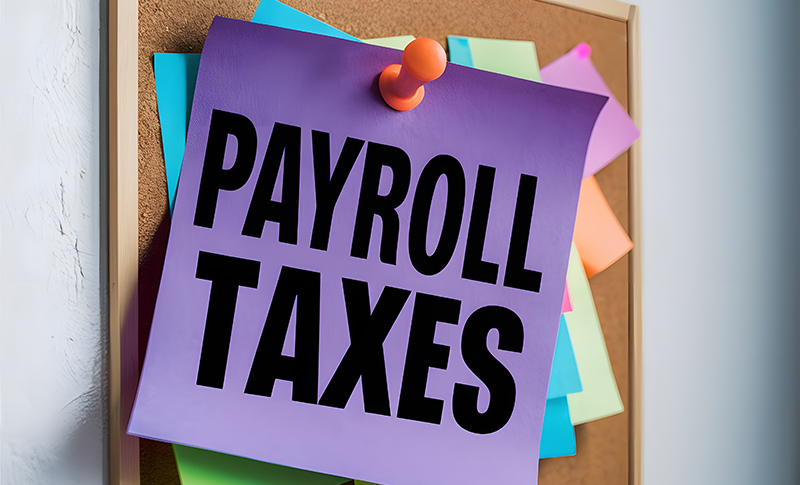Understanding Qualified Business Income Deduction for LLCs
October, 17 2022 by Carolyn Richardson, EA, MBA
Is income from a sole member sailboat racing LLC qualified business income? Also, my software is allowing a deduction of the loss generated by the business against other income AND carrying forward all of the loss to the next tax year. This seems incorrect to me. Thank you.
-Beth, PA
Hello Beth,
Thank you for your question! You asked whether a sole member LLC engaged in sailboat racing is qualified business income. You also noted that your tax software is allowing a deduction for the loss generated by this business to be used against other income and is also carrying forward the loss to next year. That seemed incorrect to you.
The good news is that there’s probably not a software error. We suspect that you may be confusing what these losses represent and how they are used on the tax return, so let’s review what is likely going on here based on the limited information you provided.
Let’s first answer your question regarding whether sailboat racing would generate qualified business income, or QBI. Regardless of whether the activity is being engaged in through a sole proprietorship or a single member LLC (SMLLC), to generate QBI, the activity must be a legitimate business endeavor. There are several factors that would be considered in whether the activity is a bona fide business, but the important factors are whether the activity is carried on with continuity and regularity, and whether it is engaged in to make a profit. With an activity such as sailboat racing, it is also extremely important to be able to establish a profit motive, as this type of activity has a large element of personal pleasure and recreational aspects, and many people pursue sailing as a hobby regardless of the costs involved. My own father was an excellent sailor, but he also had a plaque on his boat that said, “A boat is a hole in the water into which one pours money.” Sadly, this is very true and, as such, the opportunity to make a profit in sailboat racing may be very limited.
There are nine factors that the IRS will review if your activity is ever audited, and the likelihood of an audit will grow higher and higher if your activity continues to incur substantial losses over the years, offsetting your other taxable income. You will sometimes find these referred to as the “hobby loss rules,” but the IRS refers to them as “activities not engaged in for profit.” The nine factors are:
- The manner in which you conduct the business
- Your expertise in sailboat racing, or the expertise of advisors you may consult
- The time and effort expended in carrying out the activity
- The expectation that any assets used in the activity may increase in value
- Your success in carrying on similar business activities (or dissimilar ones)
- The history of income and losses from the activity
- The amount of occasional profits earned in the activity
- Your financial status outside of the activity, and
- Elements of personal pleasure or recreation.
No single factor is determinative and the weight of the factors can weigh against you, even if only one or two factors works against you, depending on the facts and circumstances. For example, even if you are racing every weekend and spending a large amount of time involved in racing, the IRS may determine this isn’t a business activity, despite the amount of time and effort expended. If you have no expertise in sailboat racing or consulted anyone on it who does, you have no concrete plans on how you will create a profit, you have substantial income to pay for the activity, and you toss your receipts into a box rather than keeping good records, then the IRS is unlikely to agree that this is a business activity. The main thing to keep in mind here is, are you conducting the activity in a prudent, business-like manner? Are you keeping current, detailed records on how you are running the business? Are you making adjustments to the way you are conducting business if a profit is not being generated? Conducting the business in a prudent manner can include making the hard decision to discontinue the activity if it consistently shows losses every year. While losses can be expected in the start-up phase of the business, a “real” business isn’t created to generate losses. If the activity shows a profit in at least three out of the first five years, the IRS will presume you are in it to make a profit, but they can challenge it later if it starts generating only losses. This technically means you can only show losses for two out of the first five years, usually in your startup years. The IRS may invoke the hobby designation at any time during the activity’s life. If that happens in an audit, the deductions are limited to the amount of income you earned in the activity, and losses are limited to $0.
Let’s move on and assume that your sailboat racing activity rises to a trade or business. In this case, any income would be QBI (if there is net income after expenses), and any losses would be qualified business income losses. It sounds like you may be confusing the net loss from your Schedule C with the carryforward loss of QBI, but what is really going on here is that the same loss from the activity gets two different treatments.
First, the net loss on the Schedule C is carried over to your Form 1040 and will reduce any other income that you reported on the return. If the loss from the activity is larger than the other income on your return, you may wind up with a net operating loss (you can read more about NOLs here). But I suspect that’s not what is confusing you and, instead, you are seeing a carryforward loss in the QBI calculation on Form 8995 or Form 8995-A, Qualified Business Income Deduction.
The qualified business income deduction is calculated by taking the income and losses from all your business activities and netting them into one amount. Therefore, losses from one business activity will offset gains from another business activity. If the net amount is positive, you get a 20% QBI deduction (QBID) on your Form 1040, if you qualify. If the net amount is negative, though, that net loss amount is carried forward to the next year to offset any gains from your business activities in the following year. For example, if you had two business activities and one had a $20,000 net profit but the other had a $25,000 net loss, your QBI deduction would be $0 in this tax year because this nets to a negative $5,000. That net loss amount then would carryforward to the following tax year and offset any business income on Form 8995 for the next year. If you had a net profit the following year of $7,000, that would be reduced to $2,000 and your QBID would be 20% of the $2,000. If your only business activity is the sailboat racing activity, then the loss you incurred this year has no QBI profits to offset it and the entire loss will carryforward on Form 8995 to reduce any future profits before you can take a qualified business income deduction. If you never generate income from the activity, you will not receive a QBI deduction. If you close the activity with a carryover of the QBI loss, that loss is never used anywhere on the return.
I would also like to point out that a QBI loss is NOT a net operating loss, so please do not confuse the two terms. A carryforward of a QBI loss will not reduce your Schedule C net profits in future years for purposes of the self-employment tax calculation. The QBI loss carryforward is used only for the calculation of the qualified business income deduction on Form 8995 and has no effect on any other part of the tax return.
We hope that answers your question and clarifies what your software is doing.
Happy sailing!
Carolyn Richardson, EA, MBA





